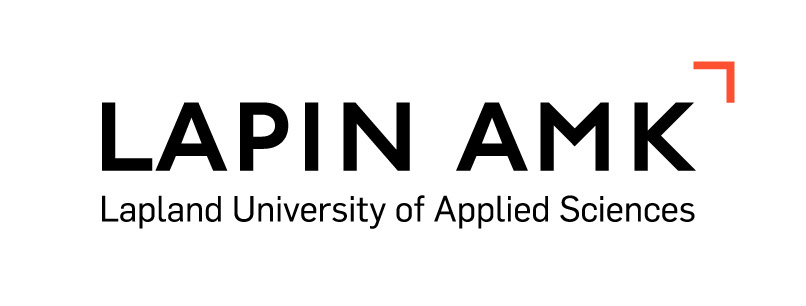Industrial Electrification and AutomationLaajuus (5 cr)
Code: K53SL142OJ
Credits
5 op
Teaching language
- Finnish
Objective
After completing the course, the student masters the electrification and automation phases of production plants from design to commissioning. The student is familiar with different implementation options for electrification and automation of production plants and is able to choose implementation solutions suitable for different needs. The student is able to dimension and select components and make plans for different needs.
Content
- Production electrification implementation options
- Production plant automation implementation options
- standards and good practice
- model documentation (companies, SFS, Severi, PSK, ...)
- project phases, tasks and documentation at different stages
- industrial design parties and information exchange
- examples of practical solutions
- Production and presentation of documentation for electrification and automation, as well as justifications for choices and sizing
- industrial motor centers with traditional I / O and fieldbus
- frequency converters and motor drives for industrial applications
Qualifications
NULL
Assessment criteria, satisfactory (1)
Satisfactory (1)
Production facilities and electrification and automation know-how depend on guidance.
Student communication and documentation is deficient.
Output targets are achieved under the guidance of an instructor.
The student has participated in the work but has been mainly passive.
Satisfactory (2)
Production facilities and electrification and automation skills are largely independent but deficient.
Student communication and documentation includes some factual and linguistic errors and omissions.
Output targets are achieved under the guidance of the supervisor and partly independently. The student's activities are partly unplanned.
Assessment criteria, good (3)
Good (3)
The know-how of production plants and electrification and automation is largely independent.
Student communication and documentation is a good professional and business language.
Production targets are mainly achieved independently.
The student's activities are mainly under control.
Good (4)
The expertise of production plants and electrification and automation is independent and systematic.
Student communication and documentation is analytical, reasoning and good professional and business language. Production targets are achieved independently.
The student's activities are mainly planned.
Assessment criteria, excellent (5)
Commendable (5)
The know-how of production plants and electrification and automation is independent, independent and systematic.
Student communication and documentation is analytical, reasoning and good professional and business language. Production targets are achieved independently.
The student's activities are planned.
Enrollment
01.09.2021 - 03.01.2022
Timing
10.01.2022 - 31.03.2022
Credits
5 op
Virtual proportion (cr)
4 op
RD proportion (cr)
2 op
Mode of delivery
20 % Contact teaching, 80 % Distance learning
Unit
Bachelor of Engineering, Electrical Engineering
Teaching languages
- Finnish
Seats
0 - 60
Degree programmes
- Degree Programme Electrical and Automation Engineering
Teachers
- Heikki Isometsä
- Jaakko Etto
Responsible person
Jaakko Etto
Scheduling groups
- Harjoitusryhmä 1 (Size: 0. Open UAS: 0.)
- Harjoitusryhmä 2 (Size: 0. Open UAS: 0.)
Student groups
-
KA53S20Sr2
-
KA53S20Sr1
-
KA53S20Sr3
Education groups
Objective
After completing the course, the student masters the electrification and automation phases of production plants from design to commissioning. The student is familiar with different implementation options for electrification and automation of production plants and is able to choose implementation solutions suitable for different needs. The student is able to dimension and select components and make plans for different needs.
Content
- Production electrification implementation options
- Production plant automation implementation options
- standards and good practice
- model documentation (companies, SFS, Severi, PSK, ...)
- project phases, tasks and documentation at different stages
- industrial design parties and information exchange
- examples of practical solutions
- Production and presentation of documentation for electrification and automation, as well as justifications for choices and sizing
- industrial motor centers with traditional I / O and fieldbus
- frequency converters and motor drives for industrial applications
Evaluation scale
H-5
Assessment criteria, satisfactory (1)
Satisfactory (1)
Production facilities and electrification and automation know-how depend on guidance.
Student communication and documentation is deficient.
Output targets are achieved under the guidance of an instructor.
The student has participated in the work but has been mainly passive.
Satisfactory (2)
Production facilities and electrification and automation skills are largely independent but deficient.
Student communication and documentation includes some factual and linguistic errors and omissions.
Output targets are achieved under the guidance of the supervisor and partly independently. The student's activities are partly unplanned.
Assessment criteria, good (3)
Good (3)
The know-how of production plants and electrification and automation is largely independent.
Student communication and documentation is a good professional and business language.
Production targets are mainly achieved independently.
The student's activities are mainly under control.
Good (4)
The expertise of production plants and electrification and automation is independent and systematic.
Student communication and documentation is analytical, reasoning and good professional and business language. Production targets are achieved independently.
The student's activities are mainly planned.
Assessment criteria, excellent (5)
Commendable (5)
The know-how of production plants and electrification and automation is independent, independent and systematic.
Student communication and documentation is analytical, reasoning and good professional and business language. Production targets are achieved independently.
The student's activities are planned.
Qualifications
NULL
